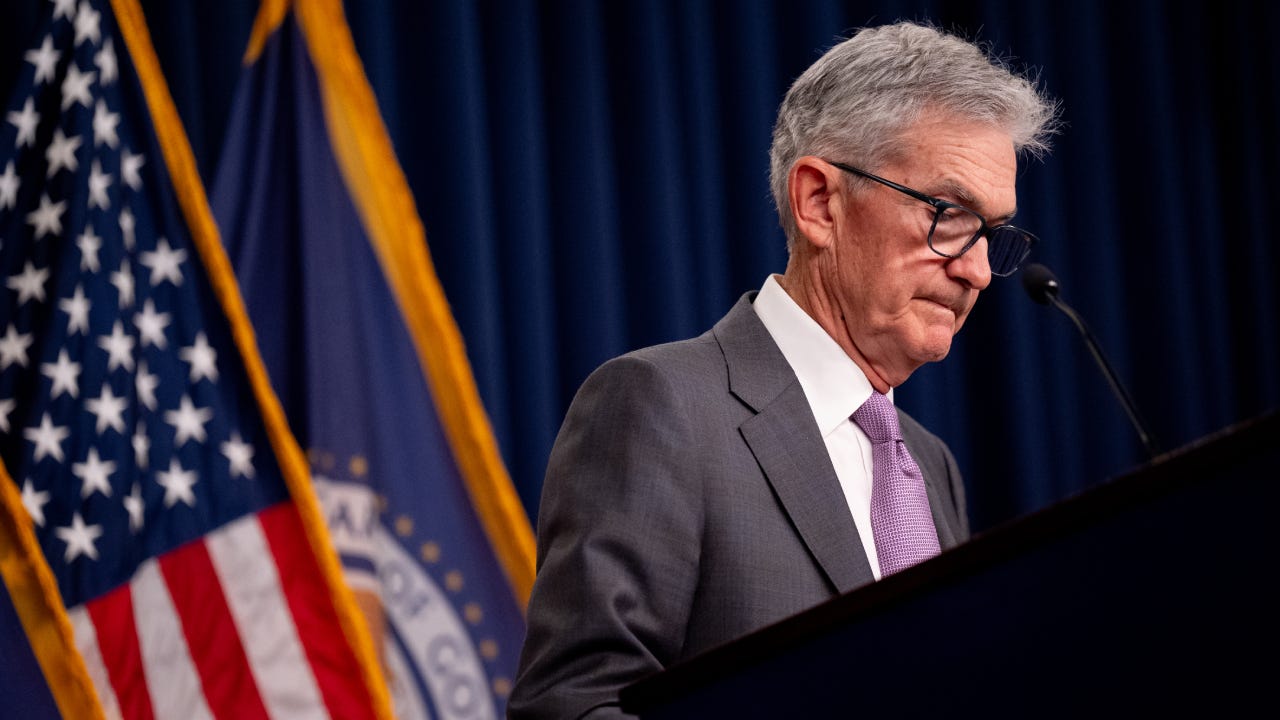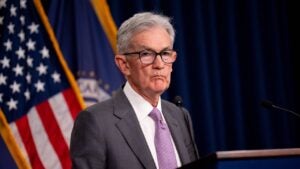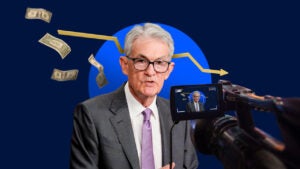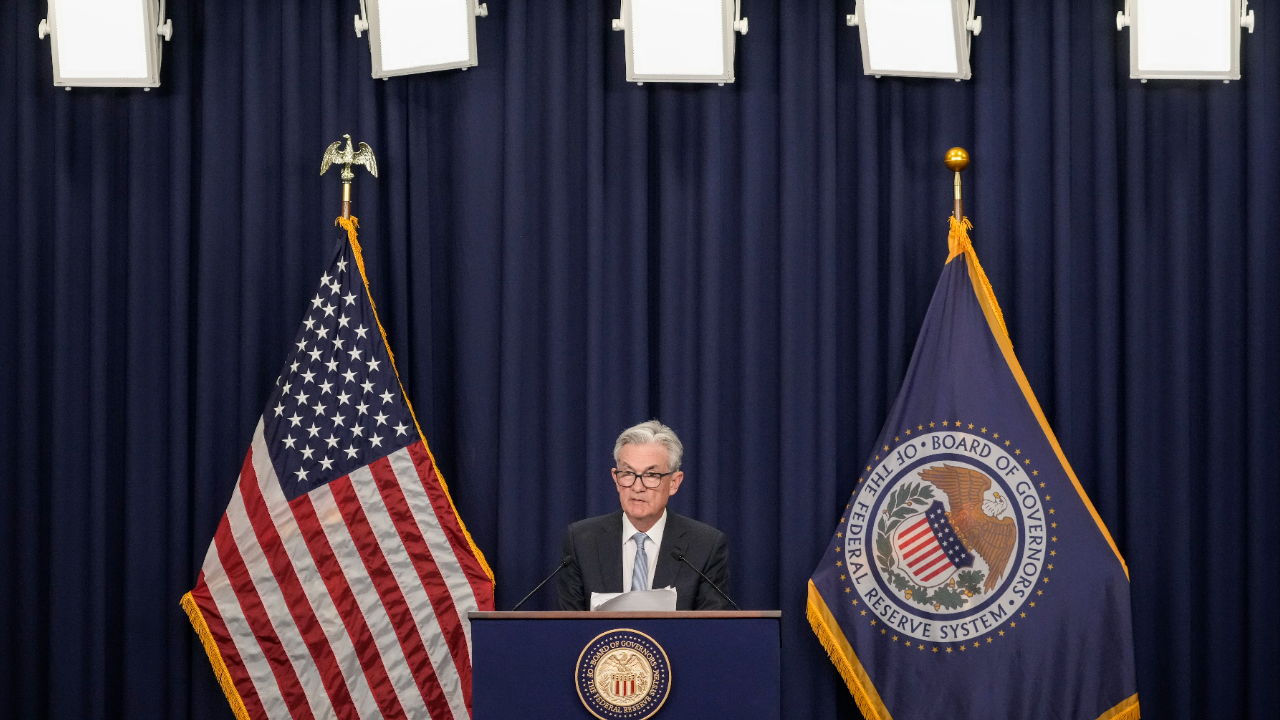With the job market weakening, a September Fed interest rate cut seems imminent. How big could it be?

Key takeaways
- A rate cut at the Fed's next meeting in September seems likely, as the job market weakens and inflation retreats back to the Fed's 2 percent target.
- The unemployment rate has increased to 4.3 percent from a historic low of 3.5 percent just 12 months ago, fueling fears about a potential recession.
- Economists are beginning to project that the Fed could cut interest rates at all three remaining meetings of this year, by either a quarter of a percentage point or a bigger half-point move.
Throughout this year, Federal Reserve Chair Jerome Powell has said he could see two scenarios that would warrant interest rate cuts. First, inflation could retreat, giving the U.S. central bank confidence that it’s slowed the economy enough. Second, the job market could start to weaken, sounding alarm bells within the Fed that it may need to stave off a bigger slowdown.
Right now, both scenarios look like real possibilities.
The Fed’s preferred inflation measure is just half a percentage point above the Fed’s 2 percent goal, while the unemployment rate has rapidly increased from a historic low. Meanwhile, in July, the share of Americans in the labor force who are jobless rose to 4.3 percent, the highest since October 2021, the latest Department of Labor data showed.
The news comes two days after Chair Powell said Fed officials debated cutting interest rates in July but thought they still had time to wait and see that inflation is back on track.
“If we do get the data that we hope, then a reduction in our policy rate could be on the table at the September meeting,” the chief central banker said after the latest Federal Open Market Committee (FOMC) meeting July 30-31. “Inflation is probably a little farther from its target than employment, but the downside risks to the employment mandate are real now.”
The Fed’s next scheduled opportunity to cut interest rates is over a month away, and investors are responding to the unexpected weakness with fears that the Fed made a mistake by holding interest rates steady. The S&P 500 dropped more than 2 percent throughout the trading day on Friday, while the NASDAQ dropped almost 3 percent.
As the weaker data rolled in, the debate among economists over a September rate cut shifted from “will they or won’t they?” to “how big will they go?”
“The across-the-board weakness in the July employment report further fuels the view that the Fed is late to easing monetary policy,” Nationwide Chief Economist Kathy Bostjancic says. Another economist, Capital Economics’ Stephen Brown, says the Fed might debate cutting by half a percentage point, rather than a quarter of a percentage point. Meanwhile, if future reports show more weakness, Fed officials may even debate raising borrowing costs at an emergency unscheduled move, he adds.
The Fed’s interest rate decisions ripple through Americans’ wallets, impacting how much it costs for them to finance big-ticket purchases from homes and cars, to how much they earn in interest on savings accounts and certificates of deposit (CDs).
Lower rates could offer some relief to borrowers, though it depends on how much the Fed reduces borrowing costs. Since the Fed started raising interest rates to tame inflation, credit card rates have surged to the highest levels ever recorded, car loans hit the highest in over a decade and home equity lines of credit have barreled to the highest since the early 2000s.
But lower rates might not be worth wishing for, if the reason for it is a worsened job market. The uncertainty underscores the importance of saving for the unexpected, according to Bankrate’s chief financial analyst Greg McBride, CFA.
You ignore the prospect of a recession at your own peril. An evergreen priority for the majority of households is to beef up their emergency savings.— Greg McBride, CFA , chief financial analyst for Bankrate
Is the economy heading for a recession? Even the experts aren’t sure
While they were raising interest rates, Fed officials said they needed to let some air out of the balloon to cool an overheated post-pandemic economy.
When the job market was at its tightest in the summer of 2022, there were two vacant jobs for every unemployed person, the largest jobs-to-jobless ratio on record, Department of Labor data shows. As the balance of power shifted away from the employer and instead toward the jobseeker, wages and salary costs for employees ballooned by the fastest pace in records dating back to the early 2000s, data from the agency also revealed.
The challenge, however, has been not letting too much air escape while deflating the economy — and telling the difference between necessary cooling or something worse. Technically, the unemployment rate is just a tenth of a percentage point higher than the Fed’s estimates of full employment, a healthy level that doesn’t risk triggering more inflation but also low enough to allow most workers who want a job to find one. Not to mention, unemployment has averaged between 5.7 percent since the 2000s, a level that it’s held at even when the economy was at the time seen as healthy.
While the level is historically low, the rate of change has been swift. For example, the increase in the unemployment rate last month triggered a widely watched recession indicator known as the “Sahm rule.” The rule calculates the three-month moving average of the unemployment rate over a 12-month period and claims that a recession has begun once that moving average moves 50 basis points or more past its previous low. It’s yet to be wrong.
But history doesn’t always repeat itself, the former Fed economist and creator of the rule Claudia Sahm has said in interviews with Bankrate dating back to 2022.
For starters, the job market was at a historically healthy starting point when the Fed began raising interest rates, and the U.S. economy has been proving economists wrong ever since it recovered faster than expected after the pandemic.
It also wouldn’t be the only traditional recession indicator that’s been off post-pandemic. The U.S. economy shrunk in the first two quarters of 2022, another common rule-of-thumb for when a recession has begun.
“It doesn’t mean all of these guideposts are bad or we shouldn’t use them in the future,” Sahm told Bankrate in December 2023. “COVID was completely off the charts. It disconnected a lot of different economic relationships.”
At the Fed’s July post-meeting press conference, Powell said the rule needs to be taken into account along with the “totality” of the data. The chief central banker also said that officials were still betting that the slowdown in the labor market had more to do with “normalization,” not weakness, though that was before the July employment report.
We're balancing the risk of going too soon against the risk of going too late. … It's a very difficult judgment call, but this is how we're making it.— Jerome Powell, Federal Reserve Chairman
Even so, a higher unemployment rate from here would be beyond what most economists expect. On average, economists projected that the unemployment rate would hit 4.3 percent by June 2025, Bankrate’s Second-Quarter Economic Indicator poll showed.
Even Fed officials didn’t expect this much of a slowdown. Just three of the 19 officials on the FOMC expected an unemployment rate above 4.1 percent by the fourth quarter, previous projections show.
How much will the Fed cut interest rates this year? That depends on the economy
How much the Fed cuts interest rates depends on the extent of the economic slowdown.
After the July employment report, investors are betting on a near 2-in-3 chance (or 68 percent) that the Fed cuts borrowing costs by a larger half a point, CME Group’s FedWatch tool shows. By the end of the year, investors are split between 100 to 125 basis points worth of cuts.
Economists are expecting a far less aggressive response from the Fed, though they have broadly begun moving up their forecasts. RSM’s Chief Economist Joe Brusuelas was penciling in a quarter-point cut in September and December before the latest data revealed a sharper slowdown in the labor market. Now, he’s penciling in three quarter-point moves at each of the Fed’s remaining meetings this year, in September, November and December.
Wall Street investment bank Goldman Sachs also followed suit by penciling in three consecutive rate cuts. Citi Bank is expecting a half-point cut in September and November. Meanwhile, Morningstar’s Chief U.S. Economist Preston Caldwell says the Fed might have made a different judgment call had the jobs data for July been available.
The economy isn’t flashing red yet to all economists.
“The body of data shows a labor market that is cooling but not collapsing,” says Richard Moody, chief economist at Regions Financial Corp, noting that the slowdown in job growth reflects less hiring and not layoffs. He also adds that the labor force participation rate for workers between the ages of 25 and 54 rose to the highest since 2001, a feature of a solid job market.
Hindsight is also 20-20. Pivoting and cutting interest rates at the July meeting after the Fed had already taken it off the table would’ve likely still cut investors off guard, which could have its own adverse side effects, according to Bill English, professor at the Yale School of Management who spent over two decades at the Fed.
“People would’ve said, ‘Well, what does the Fed know that we don’t know? Do they think the economy is going to fall into a recession, that they needed to act now and they couldn’t wait?” English says. “There are risks on both sides. It’s not that there isn’t a risk associated with waiting to cut rates. It’s that they judged the risks of the other side were there, too.”
Fed officials did update their statement to reveal that they now think the risks of doing too little and doing too much “continue to move” in better balance. The Fed hasn’t yet put its money where its mouth is, though, according to Greg Daco, chief economist at EY-Parthenon.
“Even though they might communicate that the balance of risks is more even, they implicitly continue to perceive the balance of risks as being tilted toward more inflation and more persistent inflation,” Daco says. “That’s why they’ve been so resistant to starting the easing cycle.”
Steps to take as the Fed gears up for rate cuts
Interest rates might indeed fall more this year than consumers expected just a few months ago, but the risk is that it won’t be for good reasons.
As the Fed ponders the timing for rate cuts, it’s important for consumers to focus on:
- Paying down debt: Those with high-cost, variable-rate debt are hit hardest in a high-rate era. For now, rates are unlikely to fall enough to bail you out of high-interest debt, McBride says. Eliminating some of your interest costs, meanwhile, might free up more cash to save.
- Keep an eye on refinancing: If you can find an interest rate at least half a percentage point lower than what you’re currently paying, it’s likely a good time to see whether the costs of refinancing are worth it to reduce your monthly payment, according to McBride.
- Prioritizing your savings: Yields are likely going to edge lower much more quickly, now that it looks like the Fed is going to cut interest rates. But if you park your cash in the right account, you’re still in for a competitive return, especially compared with four years ago when the U.S. economy plunged during the pandemic-induced recession.
- Locking in your gains for the long haul: Yields on savings accounts are variable, so the best time to lock in a CD is fading. If you have the funds to lock away, there isn’t much of a reason to wait.
Why we ask for feedback Your feedback helps us improve our content and services. It takes less than a minute to complete.
Your responses are anonymous and will only be used for improving our website.






